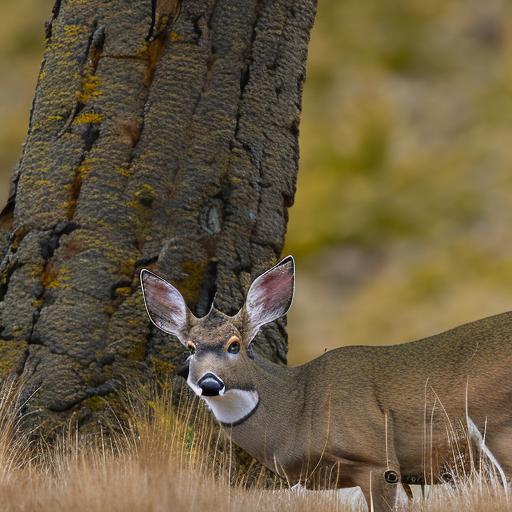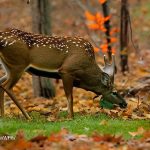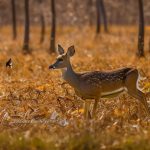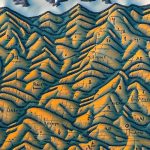Your cart is currently empty!

washington state mule deer hunting

Mule deer hunting in Washington State is a popular and thrilling outdoor activity for many hunters. With its diverse landscapes and abundant mule deer populations, Washington offers a unique and challenging hunting experience. As an avid hunter myself, I have had the opportunity to pursue mule deer in this beautiful state and have been captivated by the excitement and adventure it brings.
Key Takeaways
- Mule deer hunting is a popular activity in Washington State.
- Understanding the behavior and habitat of mule deer is crucial for a successful hunt.
- Hunters must obtain the necessary licenses and follow regulations set by the state.
- The best time for mule deer hunting in Washington State is during the fall season.
- Choosing the right gear and equipment, as well as employing effective hunting tactics, can increase the chances of a successful hunt.
Understanding the Mule Deer Species in Washington State
Mule deer, scientifically known as Odocoileus hemionus, are a species of deer native to North America. They are named for their large ears that resemble those of a mule. In Washington State, mule deer are known for their impressive size and antler growth. Adult bucks can weigh between 150 to 300 pounds and have antlers that can reach up to 30 inches in length.
Mule deer in Washington State inhabit a variety of habitats, including forests, mountains, and shrublands. They are primarily browsers, feeding on a diet of shrubs, grasses, and forbs. Mule deer are also known for their keen senses, including their excellent eyesight and hearing. They are most active during dawn and dusk, making these times ideal for hunting.
Hunting Regulations and Licensing Requirements in Washington State
Before embarking on a mule deer hunting adventure in Washington State, it is important to familiarize yourself with the hunting regulations and licensing requirements. The Washington Department of Fish and Wildlife (WDFW) sets specific rules and regulations to ensure the conservation and sustainable management of mule deer populations.
Hunting seasons for mule deer in Washington State vary depending on the region and weapon type. It is crucial to check the WDFW website or contact local wildlife offices to obtain the most up-to-date information on hunting seasons and bag limits.
To hunt mule deer in Washington State, hunters must possess a valid hunting license and a deer tag. The state offers both resident and non-resident hunting licenses, with different fees and requirements. It is important to note that some hunting units in Washington State require special permits or tags, which are obtained through a lottery system.
Best Times of the Year for Mule Deer Hunting in Washington State
Understanding the seasonal patterns of mule deer in Washington State is essential for successful hunting. Mule deer are highly migratory animals, moving between different elevations and habitats throughout the year. The best times for mule deer hunting in Washington State can vary depending on the region and the specific behavior of the deer.
In general, early fall is an excellent time for mule deer hunting in Washington State. During this time, bucks are in their rutting season, making them more active and visible. The rutting season typically occurs from late September to early November, with peak activity in October. This is when bucks are most focused on finding mates and are more likely to respond to calls and decoys.
Late fall and early winter can also be productive times for mule deer hunting in Washington State. As the weather gets colder, mule deer tend to move to lower elevations in search of food and shelter. This can make them more predictable and easier to locate.
Choosing the Right Hunting Gear and Equipment for Mule Deer Hunting
Having the right gear and equipment is crucial for a successful mule deer hunting trip in Washington State. Here are some essential items to consider:
1. Firearms: Depending on personal preference and skill level, hunters can choose between rifles, shotguns, or muzzleloaders. It is important to select a firearm that is appropriate for the terrain and distance at which you will be hunting.
2. Optics: Good quality binoculars or a spotting scope are essential for spotting mule deer from a distance. Look for optics with high magnification and good light transmission to enhance your ability to locate and assess deer.
3. Clothing: Dressing appropriately for the weather and terrain is essential for comfort and stealth. Layered clothing is recommended, as it allows you to adjust your insulation as needed. Opt for camouflage patterns that blend well with the surroundings.
4. Backpack: A sturdy backpack is essential for carrying your gear, water, and any additional supplies you may need during your hunt. Look for a backpack with multiple compartments and comfortable straps.
5. Calls and Decoys: Using calls and decoys can be effective in attracting mule deer during the rutting season. There are various types of calls available, including grunt calls and rattling antlers. Decoys can also be used to create a visual attraction.
Hunting Tactics and Strategies for Mule Deer in Washington State
Successful mule deer hunting in Washington State requires careful planning and strategic tactics. Here are some hunting tactics and strategies to consider:
1. Glassing: Glassing is the act of using binoculars or a spotting scope to scan the landscape for mule deer. Find a vantage point with a good view of the area you plan to hunt and spend time glassing for deer movement.
2. Stalking: Stalking involves moving quietly and slowly towards a mule deer that has been spotted. This tactic requires patience, stealth, and careful observation of wind direction to avoid being detected by the deer’s keen senses.
3. Still Hunting: Still hunting involves moving slowly and quietly through the hunting area, stopping frequently to scan for mule deer activity. This tactic is effective in areas with dense cover or when hunting during periods of low deer movement.
4. Ambush Hunting: Setting up an ambush involves identifying high-traffic areas such as game trails or feeding areas and waiting patiently for mule deer to pass by. This tactic requires careful scouting and knowledge of the deer’s behavior patterns.
Top Hunting Areas and Public Lands for Mule Deer in Washington State
Washington State offers a wide range of hunting areas and public lands for mule deer hunting. Here are some top hunting areas to consider:
1. Okanogan County: Located in north-central Washington, Okanogan County is known for its large mule deer populations and diverse hunting opportunities. The county offers a mix of public and private lands, with the Okanogan-Wenatchee National Forest being a popular destination for hunters.
2. Chelan County: Chelan County, located in central Washington, is another prime hunting area for mule deer. The county is home to the Wenatchee National Forest and offers a variety of terrain, including mountains, forests, and open grasslands.
3. Asotin County: Situated in southeastern Washington, Asotin County is known for its rugged terrain and abundant mule deer populations. The area offers a mix of public and private lands, with the Umatilla National Forest being a popular destination for hunters.
Tips for Scouting and Tracking Mule Deer in Washington State
Scouting and tracking are essential skills for successful mule deer hunting in Washington State. Here are some tips to help you scout and track mule deer effectively:
1. Use Maps and GPS: Obtain detailed maps of the hunting area and use a GPS device or smartphone app to mark key locations such as water sources, bedding areas, and feeding areas. This will help you navigate the terrain and plan your hunting strategy.
2. Look for Sign: Look for signs of mule deer activity such as tracks, droppings, rubs, and scrapes. These signs can provide valuable information about the presence and behavior of mule deer in the area.
3. Pay Attention to Food Sources: Mule deer are highly dependent on food sources, so identifying areas with abundant food can increase your chances of finding deer. Look for areas with fresh browse, acorns, or agricultural fields.
4. Be Mindful of Wind Direction: Mule deer have a keen sense of smell and can easily detect human scent. Always pay attention to wind direction and try to position yourself downwind of the deer to avoid being detected.
Field Dressing and Processing Mule Deer in Washington State
Field dressing and processing mule deer properly is essential for preserving the quality of the meat. Here are some tips for field dressing and processing mule deer in Washington State:
1. Field Dressing: Field dressing involves removing the internal organs of the deer to cool the carcass and prevent spoilage. Start by making an incision from the sternum to the anus, being careful not to puncture any organs. Remove the organs, including the heart, lungs, liver, and intestines.
2. Skinning: After field dressing, it is important to skin the deer to remove the hide. Start by making a cut around the hind legs and carefully peel back the hide using a sharp knife. Take your time to ensure that you remove all the hide without damaging the meat.
3. Quartering: Quartering involves dividing the deer into manageable pieces for transportation. Start by removing the hindquarters by cutting through the joints. Then, remove the front shoulders by cutting through the shoulder joints. Finally, remove the backstraps and tenderloins.
4. Processing: Once you have quartered the deer, it is important to process the meat as soon as possible to prevent spoilage. This can involve further trimming, deboning, and packaging the meat for storage or transportation.
Conservation and Management of Mule Deer Populations in Washington State
Conservation and responsible hunting practices are crucial for maintaining healthy mule deer populations in Washington State. The Washington Department of Fish and Wildlife (WDFW) works diligently to manage and protect mule deer populations through various initiatives, including habitat restoration, population monitoring, and hunting regulations.
As hunters, it is our responsibility to follow all hunting regulations and practice ethical hunting techniques. This includes harvesting animals within legal limits, respecting private property rights, and ensuring the humane treatment of animals. By practicing responsible hunting, we can contribute to the long-term conservation and sustainability of mule deer populations in Washington State.
Mule deer hunting in Washington State offers a thrilling and rewarding experience for hunters of all skill levels. With its diverse landscapes, abundant mule deer populations, and well-managed hunting opportunities, Washington State is a prime destination for mule deer enthusiasts. By understanding the species, following hunting regulations, using the right gear and tactics, and practicing responsible hunting practices, you can increase your chances of a successful mule deer hunt in this beautiful state. So grab your gear, head out into the wilderness, and embark on an unforgettable mule deer hunting adventure in Washington State.
If you’re interested in Washington State mule deer hunting, you might also want to check out this informative article on the Old Oak Syndicate website about the best time of day to hunt grouse. Grouse hunting can be an exciting and challenging experience, and knowing the optimal time to pursue these game birds can greatly increase your chances of success. To learn more about the best time of day to hunt grouse, click here: https://oldoaksyndicate.com/best-time-of-day-to-hunt-grouse/.
FAQs
What is mule deer hunting?
Mule deer hunting is the act of pursuing and harvesting mule deer for sport or food.
When is the mule deer hunting season in Washington state?
The mule deer hunting season in Washington state varies depending on the hunting unit and weapon type. Generally, the season runs from September to November.
What are the hunting regulations for mule deer in Washington state?
Hunting regulations for mule deer in Washington state include specific hunting unit boundaries, bag limits, and weapon restrictions. Hunters must also possess a valid hunting license and tag.
What is the bag limit for mule deer in Washington state?
The bag limit for mule deer in Washington state varies depending on the hunting unit and weapon type. Generally, the bag limit is one deer per hunter per season.
What weapons are allowed for mule deer hunting in Washington state?
Weapons allowed for mule deer hunting in Washington state include rifles, shotguns, handguns, and archery equipment. Specific regulations apply to each weapon type.
Where can I hunt for mule deer in Washington state?
Mule deer can be hunted in various hunting units throughout Washington state. Hunters should consult the Washington Department of Fish and Wildlife for specific unit boundaries and regulations.
What should I bring on a mule deer hunting trip in Washington state?
Hunters should bring appropriate clothing, hunting gear, and camping equipment if planning to stay overnight. It is also important to bring a valid hunting license, tag, and any necessary permits.

Herb has been a longtime lover of the outdoors. Whether it be hunting, camping, fishing or just getting outside to reset. Proud father and animal lover. Bourbon anyone?

by
Tags:
Comments

Categories
- Big Game Hunting (301)
- Deer (202)
- Reviews (3)
- Shooting (16)
- Slingshot (1)
- Small Game Hunting (42)
- Upland Hunting (126)
- Waterfowl Hunting (3)





Leave a Reply